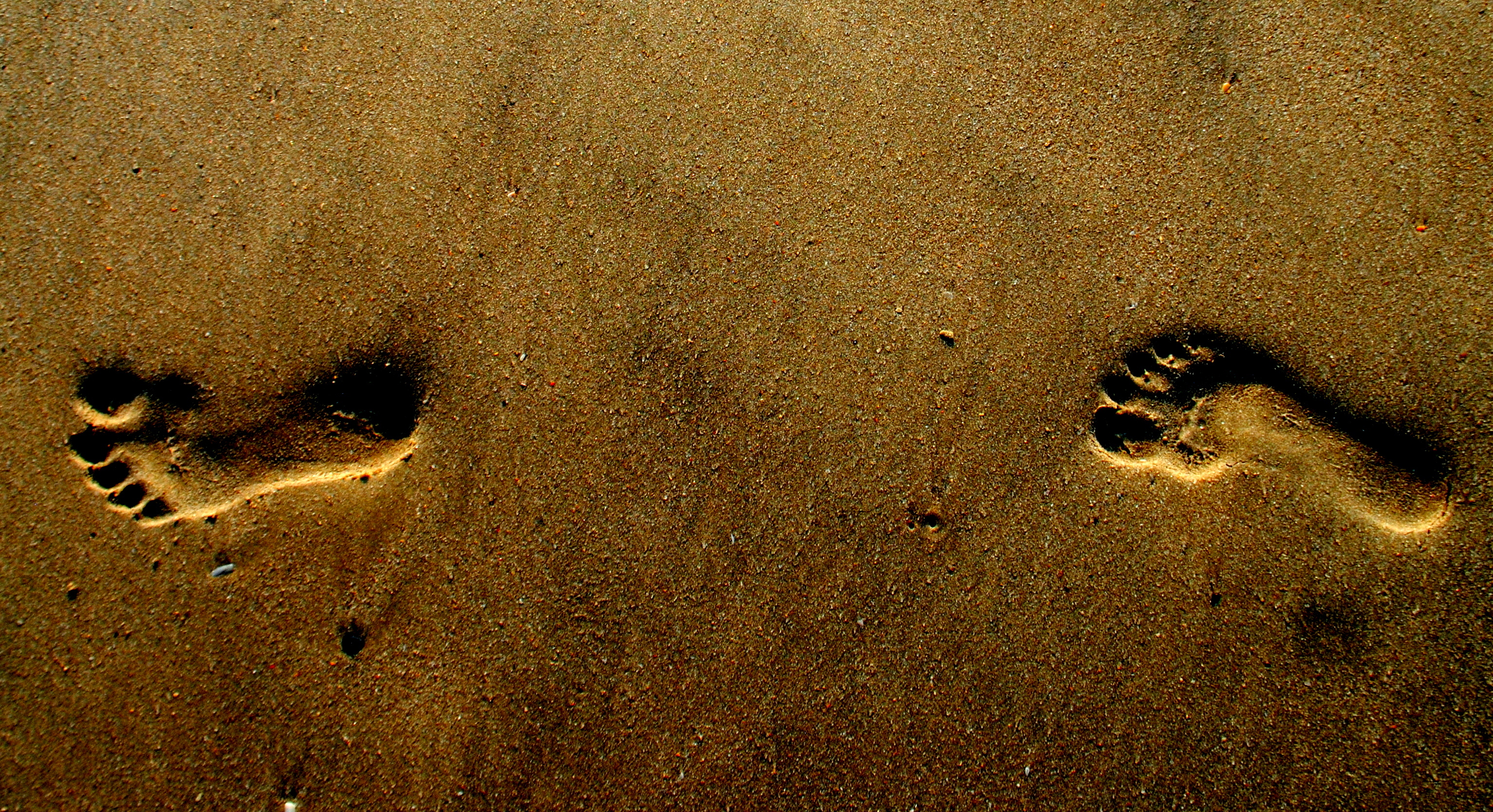
Walking in Satchari National Park, Bangladesh; Photo: Abdul Momin

Foot Steps at Beach; photo: Augustus Binu / www.dreamsparrow.net
On a fundamental level, then, as the prophetic model so abundantly affirms, to go out is to offer oneself to the world and its inhabitants. Gros expresses this point in a pithy formulation: “By walking, you are not going to meet yourself.”10 To walk is always to go somewhere, to someone other than oneself. This ethos of leaving one’s abode to reach out to another is poignantly exemplified in the life of the Prophet’s closest companion, Abu Bakr. During his time as caliph, Abu Bakr would habitually trek deep into the desert after he had led the morning prayer, and he would stop for a time at a derelict house before heading home. One day, the companion ¢Umar, impelled by curiosity, followed Abu Bakr and, after his friend had left the derelict house, inquired within, only to learn that an old, frail blind woman lived there and had taken some orphans under her wing. Abu Bakr, it turns out, would stop by and clean their home, wash their clothes, bake bread, grind wheat, and cook their breakfast. Abu Bakr was, of course, metaphorically following in the Prophet’s footsteps; the Prophet ﷺ not only walked to those in need but also walked with them. Most touchingly, a mentally ill woman once came to the Prophet ﷺ and declared, “I need you!” The Prophet ﷺ responded with gentle love, asserting, “Whichever path you need me to be on, I will go there with you.” The Prophet ﷺ remained true to his word and accompanied her wherever she wanted to go. This tale affirms the prophetic principle that we do not abandon people when they are no longer “productive” or “useful,” for, on the sacred ground of our shared humanity, there are always paths we can walk with them.
To step out into the world, then, is to be confronted with the world’s sheer reality. Whether in the face of the human other or in the face of nature’s splendors, we encounter God’s creation, which calls out for the gift of tender love, of reverent witness. Indeed, to be immersed in nature is to be beckoned by a world of dazzling abundance, where everything demands our attention—the stunning petals, the sonorous birds, the sighing wind, the sleepy woods, the serene skies.
This motif of nature as uttering a call recurs throughout the metaphysical vision of Bengali poet-philosopher Rabindranath Tagore. Reworking certain Hindu scriptural templates of the universe as suffused with sacred sound, Tagore speaks of God as the cosmic “singer” or “musician” who lovingly breathes the universe into being through no compulsion or constraint but simply for the joy of creating. The world-song metaphor highlights a living God ever-present in His creation: unlike other modes of art in which the artwork exists independently of its creator (once a painting is completed, the canvas no longer requires the painter’s touch), this song is inseparable from its singer. In this way, the world is God’s mellifluous gift of Himself, and it reverberates with the bounteous tunes of divine love.
On this theme of God as the creator of the world-song and as our unwavering companion through the world, Tagore writes:
To move is to meet you every moment,
Fellow-traveller!
It is to sing to the falling of your feet.
… He who throws his doors open and
steps onward receives your greeting.
He does not stay to count his gain or
to mourn his loss; his heart beats the
drum for his march, for that is to march
with you every step,
Fellow-traveller!11
To inhabit the world in truth is to suspend the transactional or instrumentalist lenses through which we habitually perceive our environment and let all things luminesce in their God-gifted plenitude. It is, in other words, to see the world not as a thing to be mined and manipulated for our acquisitive ends but as the non-necessitated, utterly sacred disclosure of God’s own being. Indeed, there is nowhere that we may tread where we do not already rest in God’s all-encompassing embrace: if God is the One whom we seek, He is also the One who makes that seeking possible, who sustains our weary steps, who stabilizes our faltering gait.
Echoing the Qur’anic vision of a vocal creation, wherein all things praise God in their distinctive ways, Tagore imagines the finite world as shimmering with the hue of infinity. The world gives itself to us with each exhalation of the divine breath, and we are called on simply to live with our eyes open—to marvel at the beauty of dawn, the blue of the sky, the majesty of the trees. To return to our point of departure, walking reorients us to, and emplaces us within, these elemental wonders that are given to us in profusion. In reestablishing us in our essential, creaturely truth, walking opens us up like flowers to the sunshine of divine light.
Renovatio is free to read online, but you can support our work by buying the print edition or making a donation.
Browse and Buy